Credit: Nithid Sanbundit
Tibetans from Shangri-La county traditionally live on agropastoralism and gathering. Villages are close to the Napahai Wetland Reserve and Shika Snow Mountain, where ecotourism has developed since the early 2000s. Local communities have adjusted to the widespread lack of water caused by climate change by blending their traditional livelihoods with the new opportunities brought about by tourism.

THE DAASANACH PEOPLE
With a population of over 6 million people, most of these communities practice Tibetan Buddhism. Their cultural traditions and livelihoods are deeply rooted in their religious beliefs.
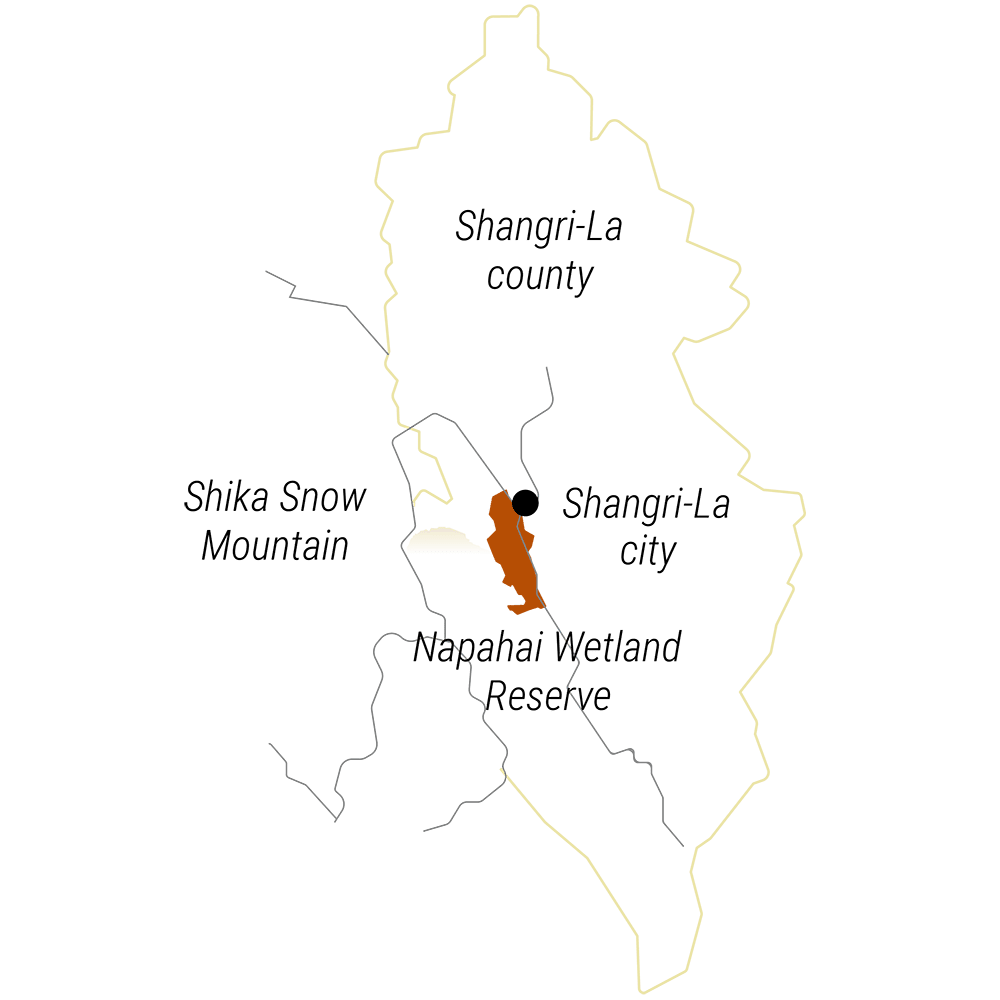
Credit: Zhuo Chen
ACTIVITIES

Ecotourism: Horse riding for tourists on the area.

Agriculture: Highland barley and gathering of matsukake fungi.

Herding: Yak and cattle. Decreasing transhumance.
TERRITORY AND CLIMATE
Credit: Zhuo Chen
Subtropical highland
CLIMATE
Changes in the climate
Rising temperatures expedite snowmelt on mountains, while grass growth on grasslands is delayed and stunted.
Less snow and rainfall in winter and spring result in heightened droughts and irregular floods during summer.
ACCESS TO NATURAL RESOURCES
Changes in the territory
Since the 2000s, national policies transformed common lands into ecotourism destinations while preserving traditional functions. Locals now have closer access to the famous.
Shangri-La market and offer activities like horse-riding on grasslands and scenic roads around Napahai Reserve and Shika Mountain.
VOICES OF LOCAL KNOWLEDGE
The Tibetan people have a complex knowledge about climate change induced impacts and how they interact with traditional beliefs and market economy, including road infrastructure, transportation and eco-tourism industry. Through their voices, we have a better understanding of the biological and sociocultural effects of climate change.
Drivers of change

 Some black pest fell down on the highland barley from air, like a pest rain. We have never seen such things in our lives, it’s like the punishment from the deities.
Some black pest fell down on the highland barley from air, like a pest rain. We have never seen such things in our lives, it’s like the punishment from the deities.
 Transhumant used to be too hard. My son or my friend could drive all the things up the mountain for me within a half day. It’s easy and very quick.
Transhumant used to be too hard. My son or my friend could drive all the things up the mountain for me within a half day. It’s easy and very quick.
 Young people don’t like working on farming or grazing. They prefer wage-labor work and looking for money and fortune in the downtown.
Young people don’t like working on farming or grazing. They prefer wage-labor work and looking for money and fortune in the downtown.
 There are too many tourists. They have dug up all the herbs on the grasslands. Those herbs used to be food for yaks and horses, but now they have no herbs to eat and their health is suffering.
There are too many tourists. They have dug up all the herbs on the grasslands. Those herbs used to be food for yaks and horses, but now they have no herbs to eat and their health is suffering.
 There are fewer matsutake in the mountains. Tourists and outsiders all come to pick them.
There are fewer matsutake in the mountains. Tourists and outsiders all come to pick them.
 It rains less when needed while rains more when we don’t need rainfall.
It rains less when needed while rains more when we don’t need rainfall.
 We can see the whole mountaintop was white when we were young, the snow on the top of the mountain would not melt even on summer days. But now it’s only April, and you can see almost no snow there. It just doesn’t snow.
We can see the whole mountaintop was white when we were young, the snow on the top of the mountain would not melt even on summer days. But now it’s only April, and you can see almost no snow there. It just doesn’t snow.
 No rain, no grass, no fungi. highland barley seeds are smaller. The grassland is not green, we feel unhappy when we see it…
No rain, no grass, no fungi. highland barley seeds are smaller. The grassland is not green, we feel unhappy when we see it…

Credit: Zhuo Chen
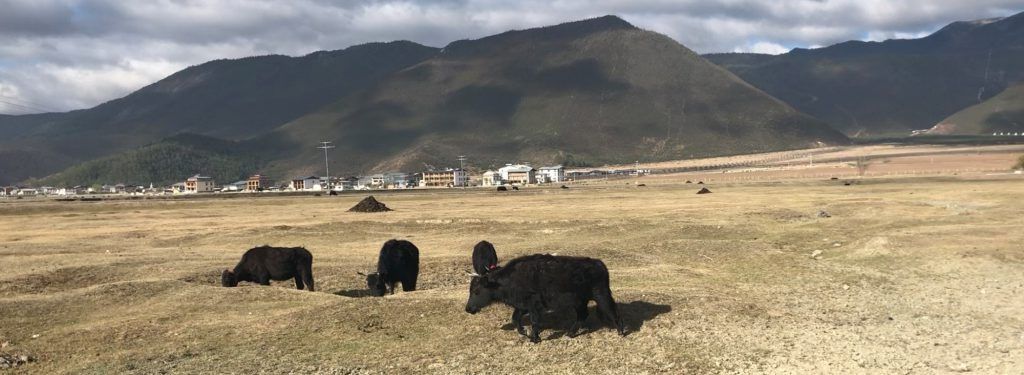
Credit: Zhuo Chen

Credit: Zhuo Chen
IMPACTS ON LIVELIHOODS AND CULTURE
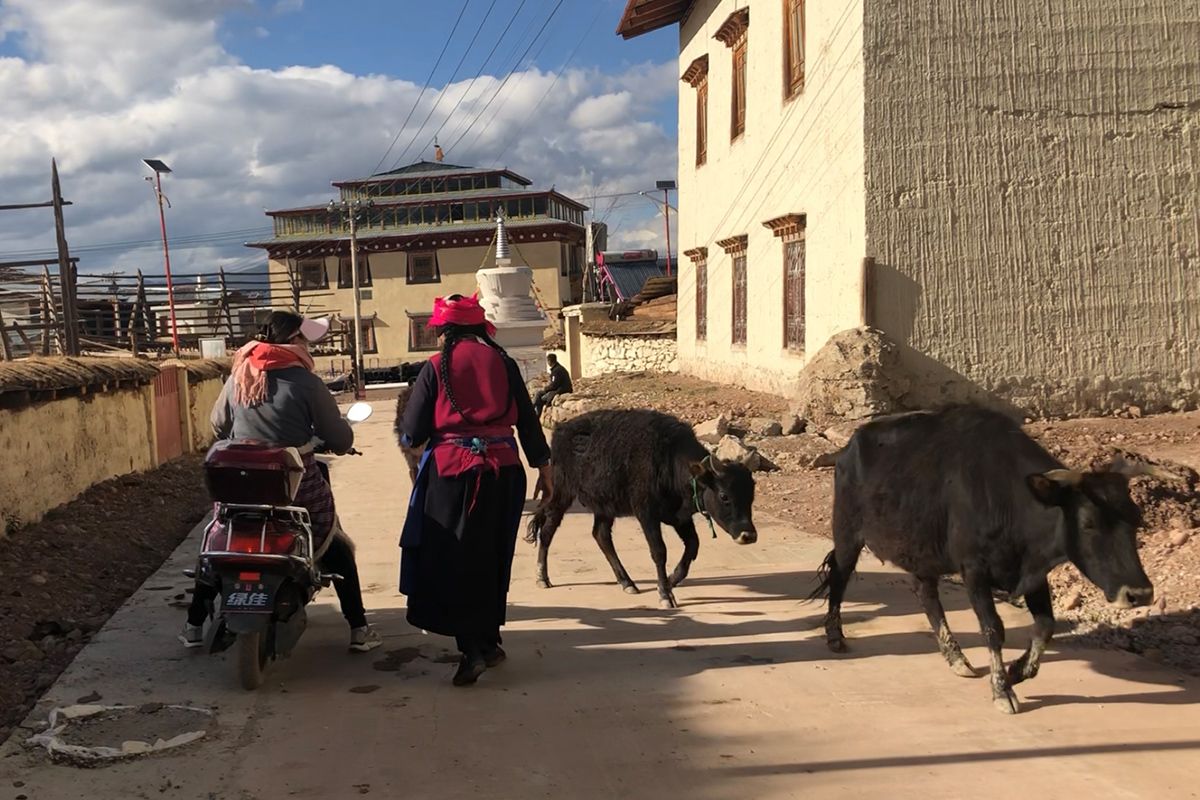
Credit: Zhuo Chen
Transhumance on the road
Drier climate, land-use changes, and ecotourism policies have reduced seasonal transhumance, leading families to abandon it. The remaining few rely on road infrastructure for their nomadic lifestyle.
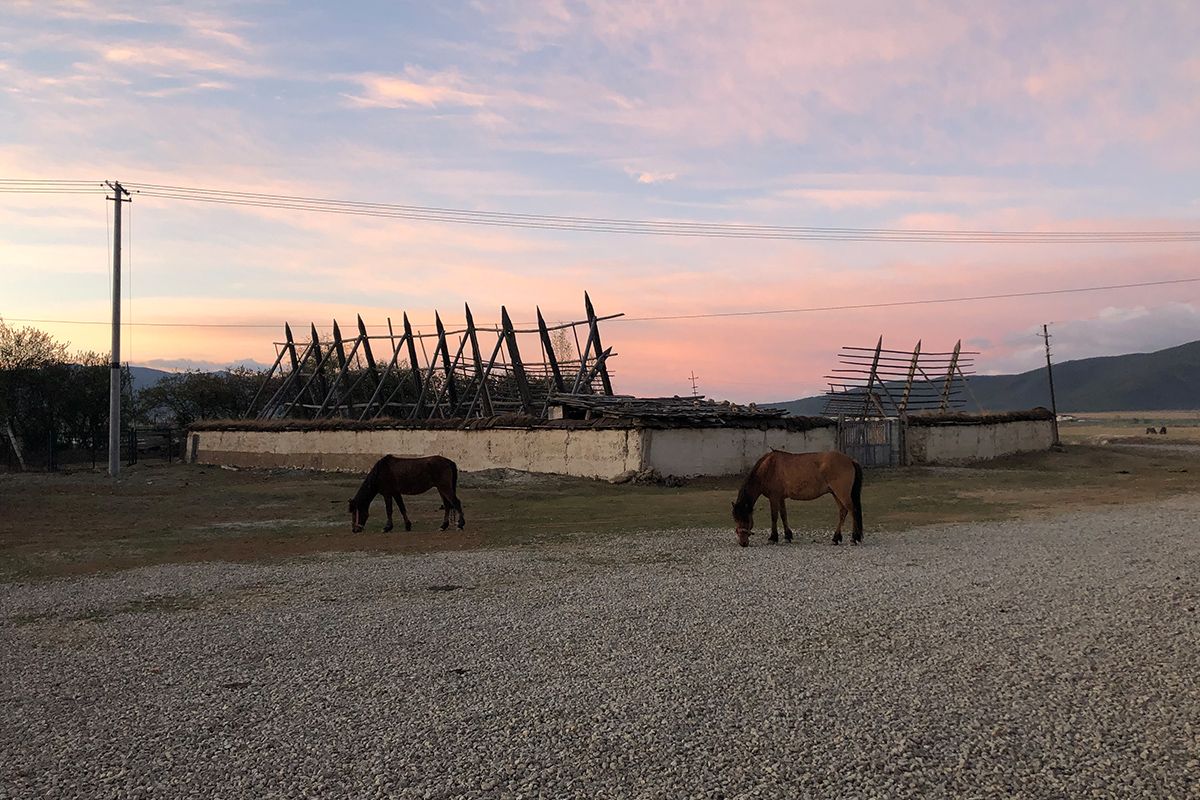
Credit: Zhuo Chen
Embracing change, honoring tradition
Highland barley is still cultivated due to traditional beliefs, but land-use changes and water scarcity affect farming practices and force the villagers to adapt their planting schedules.
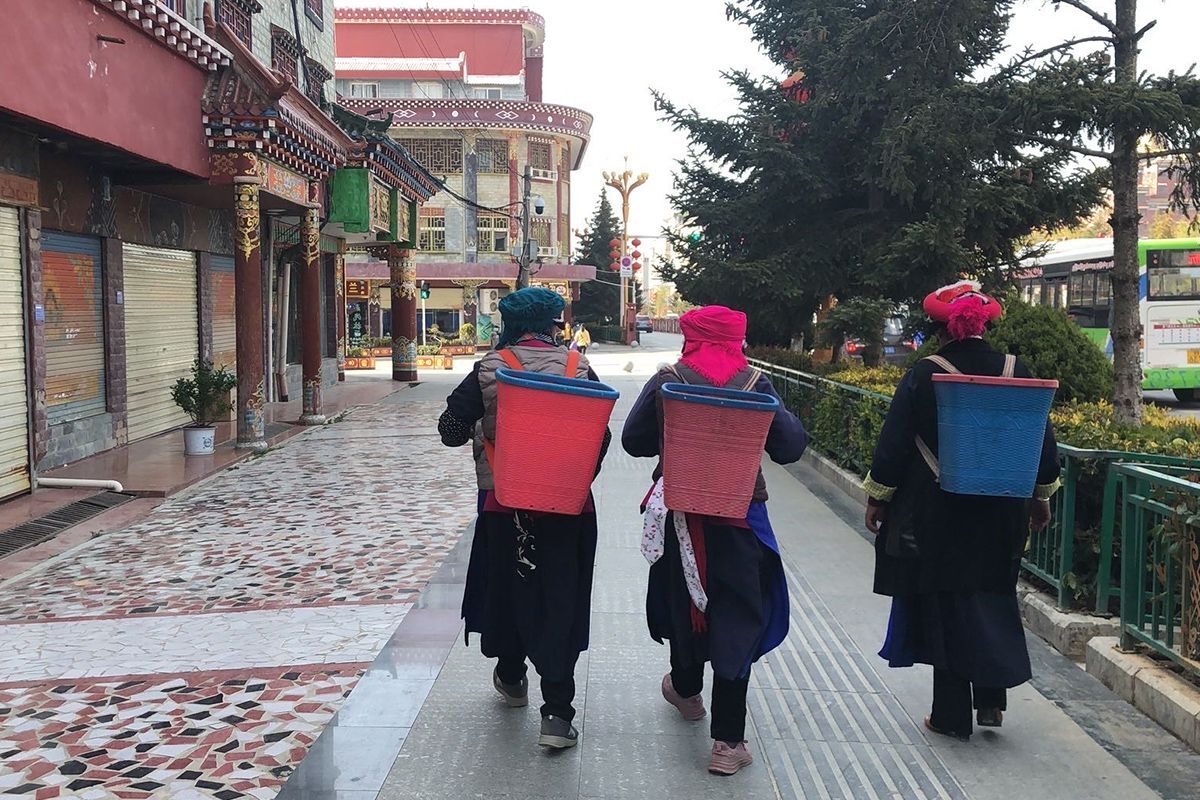
Credit: Zhuo Chen
Transforming livelihoods open up new horizons
Villagers’ shift to wage labor jobs eroded traditional farming and pasturing knowledge among the youth, but it diversified livelihoods and reduced vulnerability to drought and water shortages.
ENVISIONING A CLIMATE CHANGE-PROOF FUTURE
Diverse livelihoods for improved climate change adaptations
Tibetans in Shangri-la county have developed diversified livelihoods, combining agriculture, pastoralism, gathering, ecotourism, and wage labor in the transportation industry and tourism-related business. Thus, they now count on several sources of income which facilitate adaptation to drought and water shortages.
Harnessing roads for climate resilience
The Tibetan people have skillfully harnessed the road infrastructure, originally created as a government policy to transport timber across the mountains. These facilities have undergone a transformative shift, emerging as a powerful tool for climate change adaptation and creating new avenues for the survival and prosperity of the local Tibetan community.
UNFORESEEN BENEFITS OF INFRASTRUCTURES FOR LOCAL COMMUNITIES
Tibetan communities have a long history of adapting to the region’s harsh geography, which has allowed them to quickly integrate new infrastructure, such as the local road network, into their livelihoods. In view of the complexity of life in vulnerable communities, policy makers should exploit the potential of new developments to aid local adaptation to climate change.
LOCAL PARTNERSHIPS FOR GLOBAL CLIMATE CHANGE
Tibetan communities have demonstrated their ability to utilize their knowledge on climate change impacts to turn other drivers of change into an opportunity to reduce their vulnerability. Governments should always collaborate with local communities to leverage existing infrastructure and emerging economies in order to mitigate climate change, especially in rapidly transitioning communities impacted by the market industry.
Credit: Zhuo Chen
PUBLICATIONS
Chen, Zhuo. 2023. “Roads, Riding Stables, and Highland Barley: Livelihood diversification as climate Change adaptation among Tibetans in Shangri-la, China” in Handbook Of Indigenous Peoples And Local Communities And Climate Change. Edited by Victoria Reyes Garcia. Routledge. In press
Eric D. Galbraith et al. “High life satisfaction despite low income”. Science Advance. In review
Victoria Reyes-García et al. “Indigenous Peoples and local communities report ongoing and widespread climate change impacts on local social-ecological systems” Communications Earth & Environment. In review.
FIELDWORK CONDUCTED BY
Zhuo Chen and other local assistants





